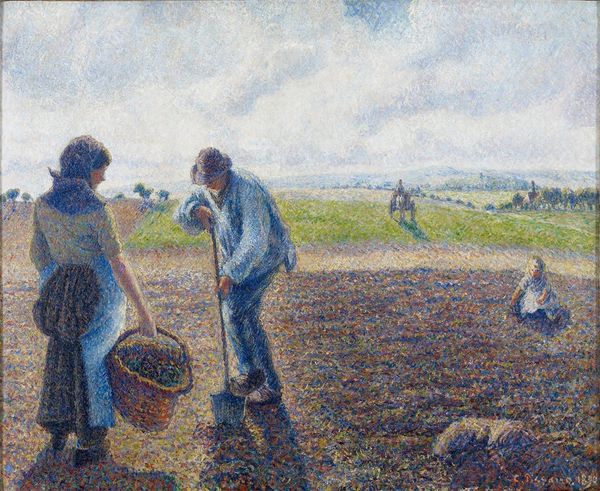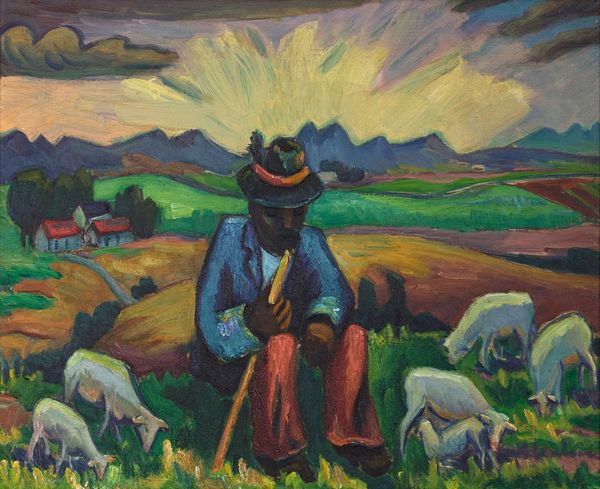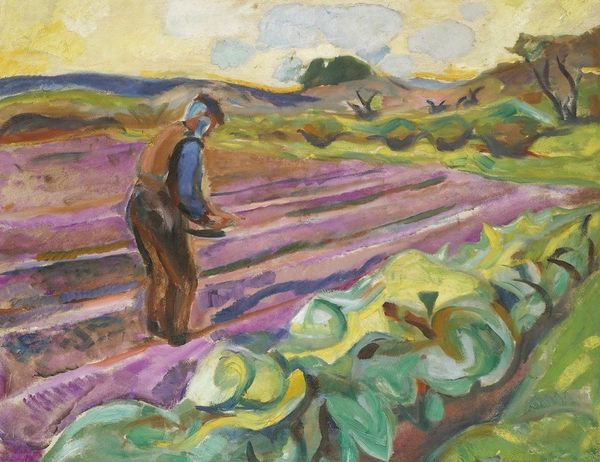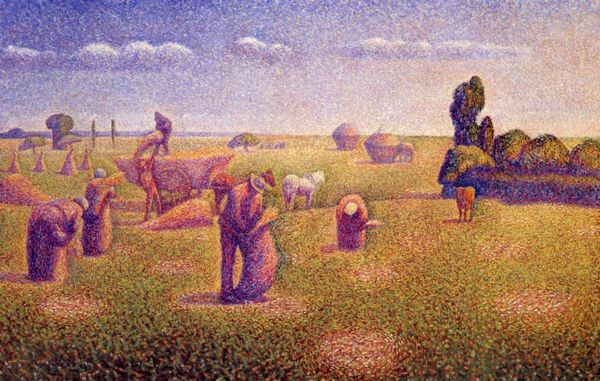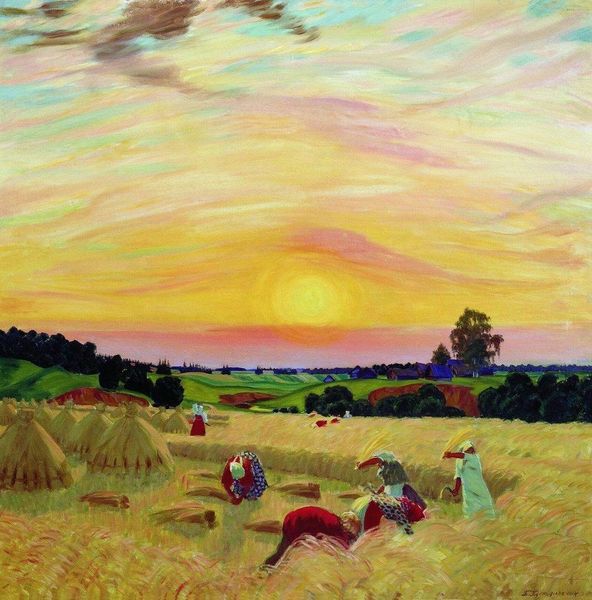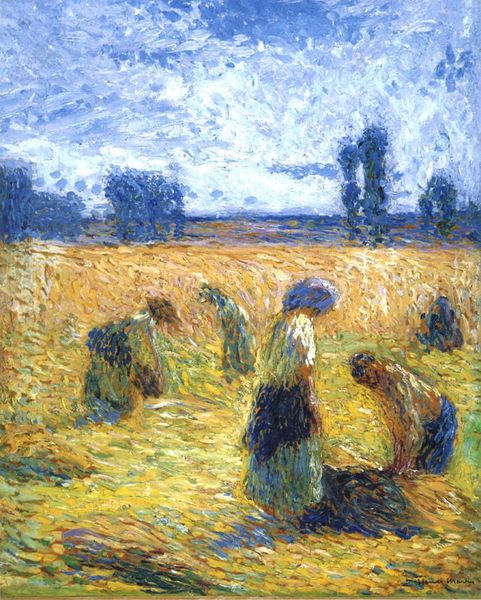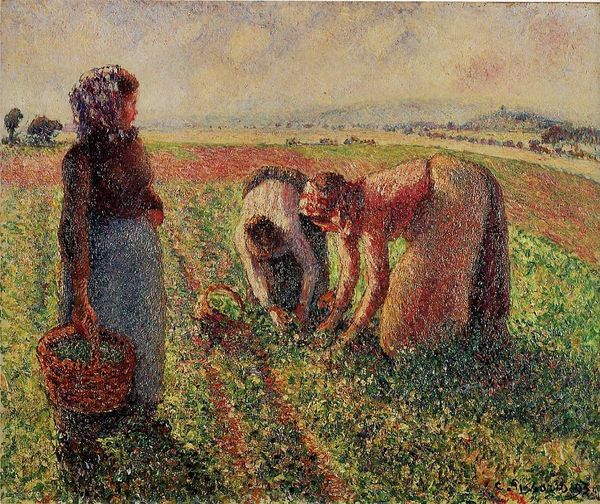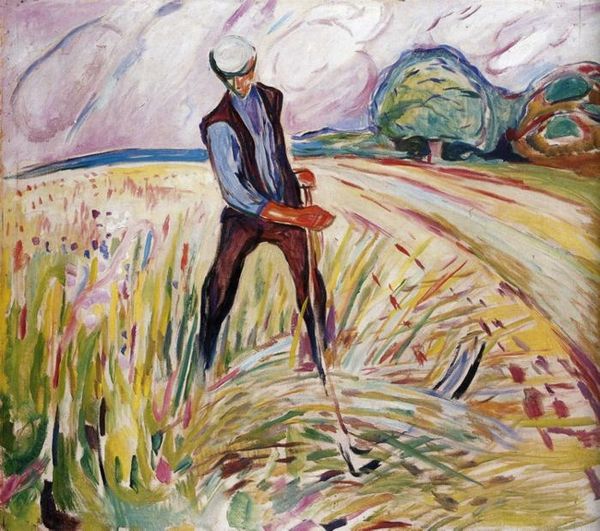
painting, plein-air, oil-paint, pastel
#
painting
#
impressionism
#
plein-air
#
oil-paint
#
landscape
#
impressionist landscape
#
figuration
#
oil painting
#
france
#
pastel
Copyright: Public domain
Curator: Looking at Camille Pissarro's "Shepherd and Sheep," created in 1888, I'm struck by the scene’s pastoral serenity. The landscape and the shepherd are all rendered in soft, gentle hues of yellow and blue with loose brushstrokes. Editor: I immediately see how the application of short, broken brushstrokes achieves a marvelous depiction of sunlight, casting patterned shadows across the landscape. Curator: Pissarro’s method, inspired by plein-air, represents the external conditions that shape artistic vision and interpretation, a direct correlation between labor and aesthetics, as Pissarro worked outside, on site with the shepherds, experiencing first-hand, not romanticizing. Editor: Note how he balances formal construction by distributing light across the surface which is equally vital for his expression, creating an atmosphere of tranquility. Consider how that sky almost vibrates above the ridge in the background, subtly drawing the eye upwards. Curator: This painting fits into France's larger shift toward landscape in art but what’s vital is how labor is visualized. The tools, clothing, sheep all embody the context that shaped Pissarro’s representation, elevating pastoral subjects in terms of labor value within capitalist structures. Editor: The diagonal emphasis of the landscape bisects the image—the bottom with visible shepherd and sheep, the top highlighting an undisturbed, more amorphous landscape. Note Pissarro's attention to value contrast there as well. Curator: That attention isn't mere contrast, but further indication of pastoral subjects. Notice too how that value extends into representations of economic factors inherent within subject's life and even landscape itself—it is impossible to ignore this inherent truth. Editor: And there’s tension created by the interplay between the tangible forms of the sheep and human figure, contrasted with the evanescent, flickering strokes articulating sky and fields. He builds this visual field to create an emotionally resonating scene. Curator: I see a scene reflective of a broader societal understanding through its means of production. That understanding then shifts our cultural values surrounding artistic significance itself, one interwoven between subject, artist, society and economic power structures. Editor: It’s a beautiful testament to how form and feeling unite to express the ephemeral experience. Curator: Precisely! How material and socio-economic structures reflect artistic and social production—all intertwined in complex dynamics, not just formal aesthetics, but material processes of rural French society.
Comments
No comments
Be the first to comment and join the conversation on the ultimate creative platform.


